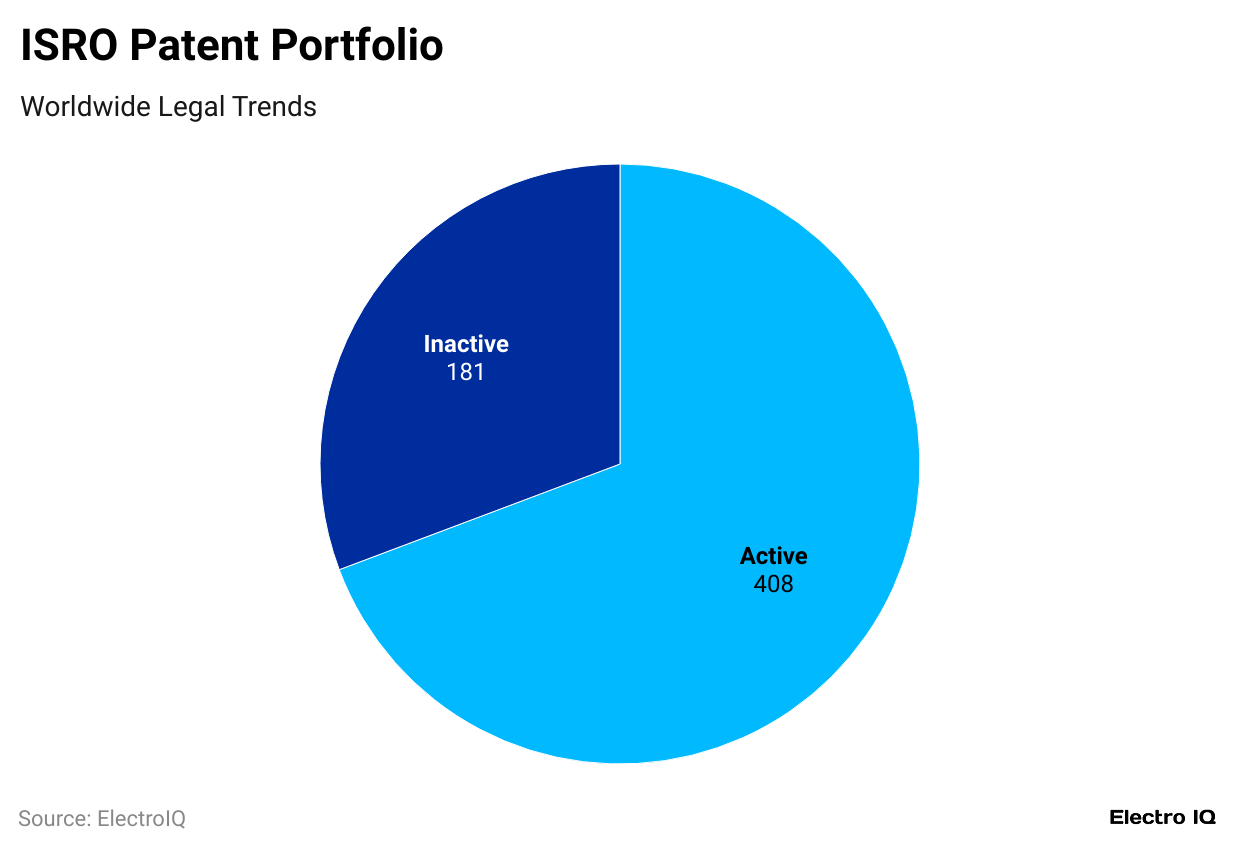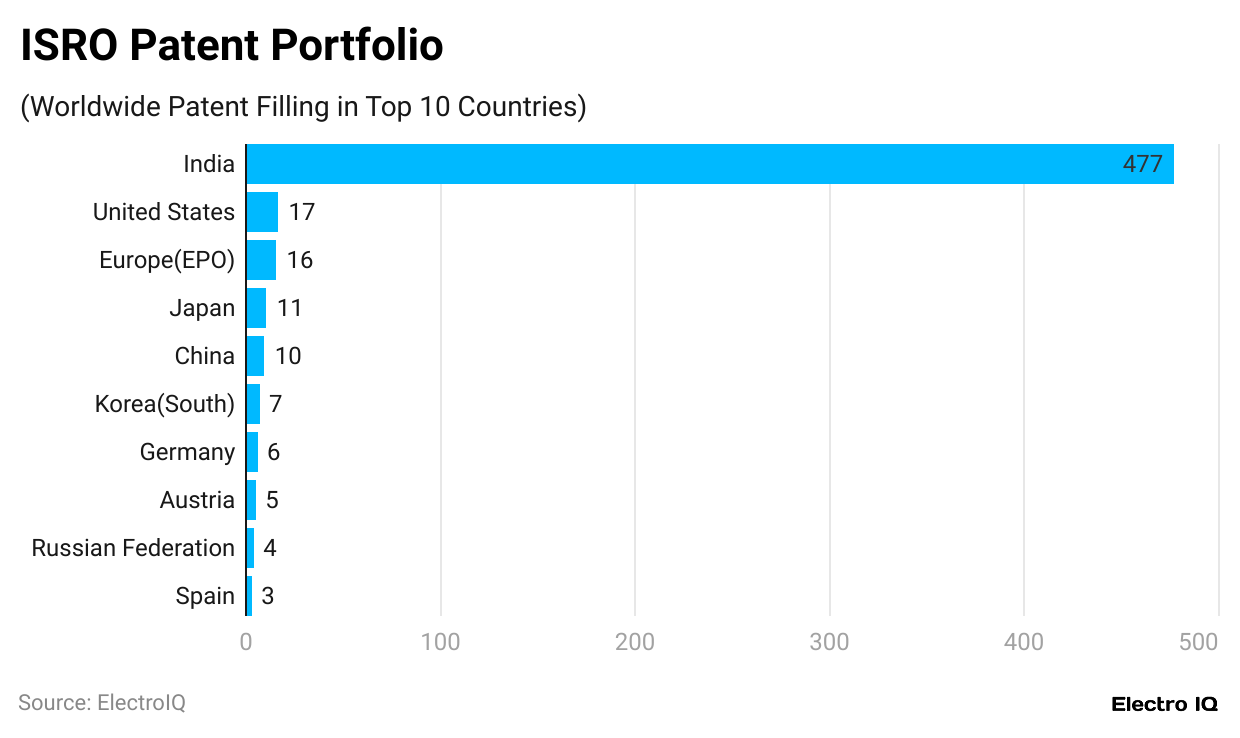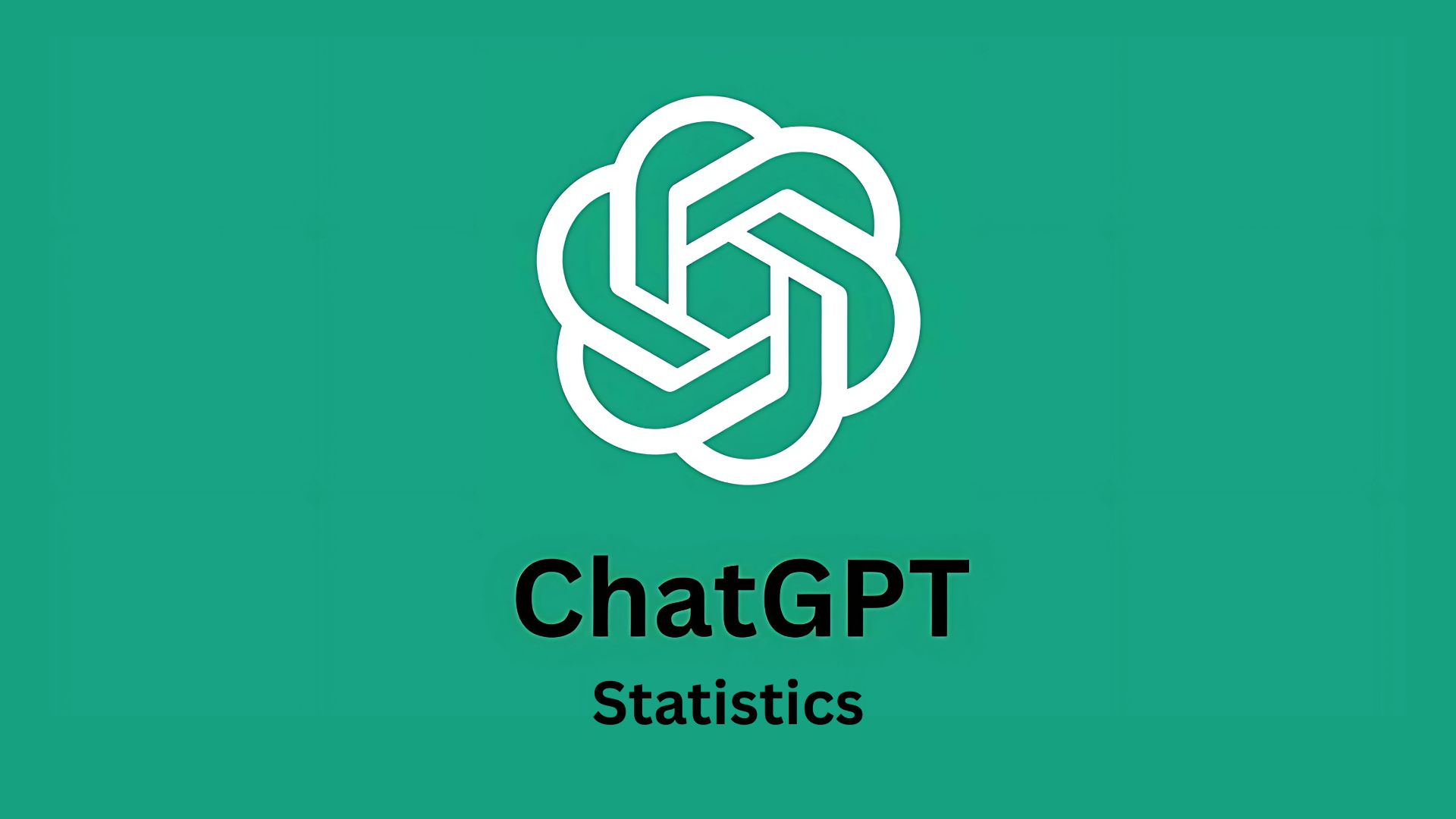ISRO Statistics By Patents And Facts (2025)
Updated · Jun 16, 2025

Table of Contents
- Introduction
- Editor’s Choice
- General ISRO Statistics 2024-2025
- ISRO Major Achievements
- ISRO Major Centers:
- Tracking and Control Facilities
- Major Launch Vehicles:
- Key Missions of ISRO in 2024
- ISRO Upcoming Missions 2025
- Government Expense on the Space Sector in India
- ISRO Patents Statistics
- On-Orbit Indian Objects Statistics
- Conclusion
Introduction
ISRO Statistics: In today’s world, space technology is quickly changing how we connect, protect, and study our planet. One name that’s making headlines around the globe is ISRO (Indian Space Research Organization). Known for its low-cost yet powerful space missions, ISRO has proven that you don’t need to spend billions to achieve big goals.
In 2024, ISRO continued to break records with new satellite launches, deep-space missions, and innovative partnerships. This topic matters because ISRO is helping make space more affordable and open to all, not just wealthy nations. In this article, ISRO Statistics, we’ll look at ISRO’s latest launch data, budget numbers, major missions, business deals, and its growing global role in the space industry.
Editor’s Choice
- In 2024, ISRO completed five successful rocket launches from Sriharikota:
- PSLV-C58 (XPoSat), PSLV-C59 (PROBA-3), PSLV-C60 (SPADEX), GSLV-F14 (INSAT-3DS), and SSLV-D3 (EOS-08).
- ISRO’s GSAT-20 and TSAT-1A were both launched using SpaceX’s Falcon-9 rocket from the U.S.
- By December 31, 2024, India had launched 136 satellites into Earth’s orbit, including those from private companies and universities.
- By the end of 2024, the Indian government had 22 working satellites in LEO (Low Earth Orbit) and 31 in GEO (Geostationary Orbit).
- Chandrayaan-3 propulsion module, now circling Earth at a high altitude since November 2023
- In the financial year 2024, ISRO supported 114 research projects, and about 77% (88 projects) focused on space technology.
- ISRO held a total of 589 global patents, grouped into 480 patent families, with 408 of these patents still active.
- In December 2024, ISRO began assembling the HLVM-3 rocket for an uncrewed Gaganyaan test mission.
- Vyommitra, India’s first humanoid robot, is scheduled to take part in this test flight in 2025.
- In 2001, PSLV-C3’s upper stage broke apart, creating 371 space debris. By the end of 2024, 41 pieces were still floating in orbit.
- com highlighted in its report using ISRO Statistics that 34 Indian rocket bodies have fallen back into Earth’s atmosphere, including 5 in 2024.
- All LVM3 stages have been re-entered except the one used for OneWeb India 1.
- Two GSLV rocket parts (from GSLV-F12 & GSLV-F14) are still in orbit.
- In total, 31 Indian satellites have re-entered Earth’s atmosphere, with nine re-entries in 2024.
- Cartosat-2, a low-Earth satellite, was purposefully deorbited on February 14, 2024, cutting its post-mission life from 30+ years to under 4 years—a first for ISRO.
General ISRO Statistics 2024-2025
- By the end of FY 2024, ISRO had a total of 114 R&D projects, with 88 of them focused on space tech. Most of these research projects were conducted in collaboration with colleges and universities, demonstrating ISRO’s strong partnership with academic institutions.
- In 2024, there were 261 rocket launches Out of these, 254 were successful, putting around 2,578 active satellites into space.
- Five missions were sent to the Moon during the year, indicating a growing global interest in lunar exploration.
- Because of 3 major breakups in orbit, including one from a Long March rocket stage, about 3,665 pieces of space debris were added to Earth’s orbit. This raised serious concerns about space safety and cleanup efforts.
- In 2024, India launched 136 new spacecraft, including 22 government satellites into Low Earth Orbit (LEO) and 31 into Geostationary Orbit (GEO).
- The Chandrayaan-2 Orbiter continues to circle the Moon, collecting data.
- The Aditya-L1 satellite successfully reached the Sun-Earth L1 point and is now observing solar activity from that location.
- A total of nine Indian satellites, including Cartosat-2, re-entered Earth’s atmosphere and burned up in 2024.
- Satellites such as SCATSAT-1, INS-2B, and EOS-7 were intentionally taken out of orbit after completing their missions.
- The upper stages of PSLV POEM-3 and POEM-4 were moved to a lower 350 km orbit to reduce space clutter.
- ISRO has set a target to make all Indian space missions debris-free by 2030, showing its commitment to a cleaner space environment.
- India is currently leading a UN group that focuses on the long-term safety and sustainability of space operations.
- ISRO also headed the 2023–24 session of the Inter-Agency Debris Coordination Committee (IADC) and contributed to the update of global rules on reducing space debris.
- With more satellites and junk in LEO, the need for Space Traffic Management (STM) is growing fast.
- In 2024, the solar activity peak (Solar Cycle 25) resulted in 18 strong and two extreme geomagnetic storms, causing many satellites to drop out of orbit faster than expected.
ISRO Major Achievements
| India’s first satellite | Aryabhata (1975) |
|
Planet-based missions |
-Chandrayaan-1 (2008) -Mangalyaan (2013) -Chandrayaan- 2 (2019) |
|
World record |
-Launched 104 satellites in one go through the PSLV-C37 mission |
|
Future missions |
-Aditya-1 -Gaganyaan -Mangalyaan-2 |
|
ISRO developed |
-Polar Satellite Launch Vehicle (PSLV) -Geostationary Satellite Launch Vehicle (GSLV) |
ISRO Major Centers:
| Center | City | Specialization |
|
Space Applications Centre (SAC) |
Ahmedabad |
Communication and remote sensing applications |
|
National Remote Sensing Centre (NRSC) |
Hyderabad |
Remote sensing data management |
|
Liquid Propulsion System Centre (LPSC) |
Valiamala & Bengaluru |
Cryogenic Engine Development |
|
Satish Dhawan Space Centre (SDSC) |
Srihari Kota |
Satellite and Rocket launches |
|
U.R. Rao Satellite Centre(URSC) |
Bengaluru |
Satellite design and development |
|
Vikram Sarabhai Space Centre(VSSC) |
Thiruvananthapuram |
Rocket development |
Tracking and Control Facilities
| Name | Location | Description |
|
National Remote Sensing Centre |
Hyderabad |
Site for studying aerial surveying and the application of remote sensing to handle natural resources |
|
Indian Deep Space Network (IDSN) |
Bengaluru |
Real-time receives, processes, distributes, and archives spacecraft health data as well as payload data. |
|
Master Control Facility |
Bhopal, Hassan |
Site for geostationary satellite orbit raising, in-orbit operations, and payload testing |
|
ISRO Telemetry, Tracking and Command Network |
Bengaluru (ground stations spread throughout India) |
Tracking telemetry, ground operations, and software development |
|
Space Situational Awareness Control Centre |
Peenya, Bengaluru |
Site for monitoring space debris and safeguarding space assets. |
Major Launch Vehicles:
| Launch Vehicle | Description |
|
SSLV (Small Satellite Launch Vehicle) |
ISRO’s first rocket, known as the Satellite Launch Vehicle (SLV), was developed in the 1980s. It was designed to send small satellites weighing about 40 kg into Low Earth Orbit (LEO). |
|
GSLV Mk III (LVM-3) |
ISRO’s heaviest launch rocket, called LVM3, can carry up to 8 tons to Low Earth Orbit (LEO) and around 4 tons to Geostationary Orbit (GEO). |
|
GSLV (Geosynchronous Satellite Launch Vehicle) |
This rocket is designed to launch satellites into Geostationary Orbit (GEO) and can lift between 2 and 4 tons. It runs on cryogenic engines, which use super-cold liquid fuel for better efficiency and higher power. |
|
PSLV (Polar Satellite Launch Vehicle) |
ISRO’s most dependable and frequently used launch rocket can carry satellites weighing between 500 kg and 1,500 kg. It played a key role in major missions, such as Chandrayaan-1 (India’s first Moon mission) and Mangalyaan (India’s Mars mission). |
|
ASLV (Augmented Satellite Launch Vehicle) |
This upgraded version of the SLV (Satellite Launch Vehicle) can carry payloads of up to 150 kg into space. It was designed to improve performance while keeping costs low, making it useful for small satellite missions. |
|
SLV (Satellite Launch Vehicle) |
ISRO’s first-ever launch vehicle, developed in the 1980s, was designed to carry small payloads of approximately 40 kg into space. It played a pivotal role in launching India’s space program. |
Key Missions of ISRO in 2024
#1. PSLV C58 Mission
- ISRO used its PSLV C58 rocket to send XPoSat, a space observatory that studies X-rays in space.
- This mission also included the POEM-3 experiment, which used the PS4 stage of the same rocket for extra research work.
#2. Aditya-L1 Solar Mission
- In January 2024, India’s first solar mission, Aditya-L1, successfully reached its final spot near the Sun-Earth L1 point.
- This mission will help scientists gain a deeper understanding of the Sun’s activity and its impact on Earth.
#3. INSAT-3DS Weather Satellite
- The INSAT-3DS satellite, used for tracking weather, was launched with the GSLV-F14 rocket.
- It was placed into a Geosynchronous Transfer Orbit (GTO) and is meant to improve weather forecasting in India.
#4. Air-Breathing Propulsion Test
- ISRO completed the second trial of its Air Breathing Propulsion Technology, which is designed to make rocket engines work more efficiently by using air from the atmosphere.
#5. Reusable Launch Vehicle (RLV) Trials
- Two tests, RLV-LEX-02 and RLV-LEX-03, proved that ISRO’s Reusable Launch Vehicle could land by itself even in difficult conditions.
- A reusable space test vehicle called Pushpak was also successfully tested.
#6. HLVM-3 (Crew-Ready Rocket)
- In December 2024, ISRO began assembling the HLVM-3 rocket, designed for human space travel.
- Its first test flight, called the G1 mission, will carry an unmanned orbital module (OM-1) to check safety systems.
#7. Axiom-4 Mission
- Two Indian astronauts, Shubhanshu Shukla and Prasanth Balakrishnan Nair, were picked for the Axiom-4 spaceflight—a private mission headed to the International Space Station (ISS).
#8. PSLV C59 Mission
- ISRO’s PSLV C59 successfully launched the Proba-3 satellites for the European Space Agency (ESA) into a long, stretched-out orbit.
ISRO Upcoming Missions 2025
#1. HLVM-3 Uncrewed Mission
- ISRO will test its Human-rated Launch Vehicle Mark-3 (HLVM-3) in 2025.
- This test flight will not have any astronauts on board, but it will verify if the rocket is ready to transport people into space under the Gaganyaan program.
#2. NISAR Satellite Mission
- Set to launch in March 2025, NISAR (a joint project by NASA and ISRO) is expected to be the costliest Earth-mapping satellite in the world, with a price tag of over USD 1.5 billion.
- It will scan Earth’s land and ice every 12 days to study climate change and natural disasters.
#3. NVS-02 Navigation Satellite
- The NVS-02 is a part of the NavIC system (India’s version of GPS).
- This new satellite will enhance location tracking accuracy and reliability for both civilian and military applications.
#4. Vyommitra: India’s Space Robot
- India’s first female-looking humanoid robot, Vyommitra, will fly aboard an upcoming uncrewed Gaganyaan test flight.
- This mission will help prepare for India’s first human space journey by testing space conditions and systems safely.
Government Expense on the Space Sector in India

(Reference: sci-tech-today.com)
| Year | In billion Indian rupees |
|
FY2017 |
80.40 |
|
FY2018 |
91.31 |
|
FY 2019 |
111.93 |
|
FY 2020 |
130.18 |
|
FY 2021 |
94.74 |
|
FY 2022 |
124.74 |
|
FY 2023 |
105.30 |
|
FY 2024 |
125.44 |
ISRO Patents Statistics
- ISRO has filed a total of 589 patents worldwide, which are grouped into 480 separate patent families. Out of these, 408 patents are still active, meaning around 69% of ISRO’s patents are currently in effect and being used.

| Active | 408 |
|
Inactive |
181 |

- In the above chart, we can see the ISRO Patents Portfolio and how many patents ISRO filed every year.

| Country | Patents |
|
India |
477 |
|
United States |
17 |
|
Europe(EPO) |
16 |
|
Japan |
11 |
|
China |
10 |
|
Korea(South) |
7 |
|
Germany |
6 |
|
Austria |
5 |
|
Russian Federation |
4 |
|
Spain |
3 |
- In the above chart, we can see the ISRO Patent Portfolio global patent filing in the Top 10 Countries.
On-Orbit Indian Objects Statistics
- By December 31, 2024, India had launched 136 satellites into Earth’s orbit. This total includes spacecraft from private companies and universities.
- The Indian government had 22 active satellites in Low Earth Orbit (LEO) and 31 active satellites in Geostationary Orbit (GEO).
- India also had two space missions beyond Earth’s orbit that were still operational — the Chandrayaan-2 Orbiter (CH2O) around the Moon and Aditya-L1, which is positioned at the Sun-Earth Lagrange Point (L1).
- The propulsion module of Chandrayaan-3 continued to operate in a high Earth orbit (over 100,000 km away) after it moved out of lunar orbit in November 2023.
- In 2024, five launches took place from Sriharikota:
- PSLV-C58 with XPoSat
- PSLV-C59 with ESA’s PROBA-3
- PSLV-C60 with SPADEX
- GSLV-F14 with INSAT-3DS
- SSLV-D3 with EOS-08
- Two more Indian satellites — GSAT-20 and TSAT-1A — were sent to space using SpaceX’s Falcon-9 rocket from Cape Canaveral, USA.
- In total, during 2024, 8 Indian satellites, one foreign satellite, and six rocket bodies (including POEM-3 and POEM-4) were placed in their planned orbits.
| Sr. No | Indian Launch Vehicles | Indian Satellites-ISRO/GOI | Indian Satellites- Private/Academics | Foreign Payloads |
|
7 |
– |
GSAT-20/ GSAT-N2 (launched by Falcon-9 Block-5) |
– |
– |
|
6 |
PSLV-C60 / SPADEX |
SPADEX-A (SDX01) SPADEX-B (SDX02) |
– |
– |
|
5 |
PSLV-C59 / PROBA-3 |
– |
– |
PROBA-3 |
|
4 |
SSLV-D3 / EOS-08 |
EOS-08 |
SR-0 DemoSat |
– |
|
3 |
– |
– |
TSAT-1A (launched by Falcon-9 Bandwagon 1) |
– |
|
2 |
GSLV-F14 / INSAT-3DS |
INSAT-3DS |
– |
– |
|
1 |
PSLV-C58 / XPoSat |
XPoSat |
– |
– |
- In 2001, the upper part of the PSLV-C3 rocket broke apart by accident, creating 371 pieces of space junk.
- By the end of 2024, most of those pieces had fallen back to Earth, but 41 fragments were still circling in space.
- By the end of 2024, a total of 34 Indian rocket stages had fallen back into Earth’s atmosphere.
- Out of these, five re-entered in 2024. All rocket parts from LVM3 launches have re-entered except for one from the LVM3 M2 OneWeb India-1 mission, which is still in orbit.
- For the GSLV rocket stages, only the GSLV-F12 and GSLV-F14 versions were still orbiting by the end of 2024.
- Up to 2024, 31 Indian satellites had re-entered Earth’s atmosphere. In 2024 alone, nine satellites came down. One of them was Cartosat-2, which re-entered on February 14, 2024.
- This was ISRO’s first LEO (Low Earth Orbit) satellite to be brought down on purpose at the end of its mission.
- This move reduced its leftover orbit time from over 30 years to less than 4 years, helping to reduce the risk of space debris.
Conclusion
In 2024–2025, ISRO made big strides in space research, innovation, and global teamwork. It launched several successful missions, like solar observatories and reusable rockets, and took key steps toward human space travel. ISRO now holds 589 patents worldwide, with 408 of them still active. The agency also added more satellites to orbit and carried out major projects, such as Aditya-L1 and NISAR. With these achievements, India’s space agency continues to grow its role in global space exploration.
Looking ahead to 2025, ISRO is focused on launching more advanced satellites and preparing for its first crewed mission, keeping India on track to become a top space power while supporting technological growth and economic progress.
Sources
FAQ.
India is preparing for a big step in its space journey with the 101st mission. On May 18, 2025, at 5:59 AM IST, ISRO will launch the EOS-09 satellite using the PSLV-C61 rocket. The launch will happen from the First Launch Pad (FLP) at the Satish Dhawan Space Center (SHAR).
The monthly pay for the head of ISRO is approximately ₹2.5 lakh (nearly USD 3,000). Along with this, ISRO scientists and engineers also get extra benefits like allowances and performance-related rewards.

Saisuman is a skilled content writer with a passion for mobile technology, law, and science. She creates featured articles for websites and newsletters and conducts thorough research for medical professionals and researchers. Fluent in five languages, Saisuman's love for reading and languages sparked her writing career. She holds a Master's degree in Business Administration with a focus on Human Resources and has experience working in a Human Resources firm. Saisuman has also worked with a French international company. In her spare time, she enjoys traveling and singing classical songs. Now at Smartphone Thoughts, Saisuman specializes in reviewing smartphones and analyzing app statistics, making complex information easy to understand for readers.









